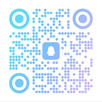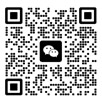【摘要】
阅读是学生比较头疼的问题,在日常的教学中,我发现许多学生都会浅尝辄止,不能做到融会贯通。他们更多的是肤浅阅读,不能真正地做到深度阅读,细细体会作者所要表达的思想。面临中考、高考压力的学生们,喜欢为了寻找答案而寻找答案,忽略了作为一门语言学科,阅读所带来的“惊喜”。因为阅读的意义远远超出了学生考试的意义,它对学生长期学习英语起着至关重要的作用。
新课标也对此作出了明确的要求:能根据上下文和构词法推断、理解生词的含义;能理解段落中各句子之间的逻辑关系;能找出文章中的主题,理解故事的情节、预测故事情节的发展和可能的结局;能读懂相应水平的常见题材的读物;能根据不同的阅读目的,运用简单的阅读策略获取信息;能利用词典等工具书进行阅读;课外阅读量应累计达到15万词以上。
【关键词】阅读目的 阅读兴趣 阅读策略
【正文】
一、明确阅读目的。
1、Reading for information around the world
在广泛的阅读中,学生了解了Brazilian footballers, rocking climbing, Peter Tripp接受的实验;Barack Obama was elected President of the United States in the 2012 American presidential election,Fine art treasures from many countries are kept in an art museum called the Louvre in Paris, France. 徜徉在无数的故事情节和缤纷的时尚生活中,学生认识到外面世界的多姿多彩,是阅读给学生打开了一扇通往大千世界的窗户。
2、Reading for using and writing
阅读是应用的前提,是应用的根基。在反复的阅读和实践中,在不知不觉的Writing中,学生会在不自觉的情况下应用所喜欢的句子。正如中国老祖宗所说的“熟读唐诗三百首,不会做事也会吟。”大量的阅读,拓宽了应用思路,综合运用能力在反复地诵读中得以提升。
3、Reading for fun
对于仍然处于英语学习基础的学生来说,对于朝气蓬勃的学生来说,FUN依然是重中之重。关注学生的兴趣点,这样一来,学生阅读的内容应该是多彩的,卡通故事、通话故事、Happy Harvest,只要学生感兴趣的都可以,并不只是限制在课本、习题中的阅读材料。
二、阅读兴趣的提升是英语阅读的关键环节。
常用阅读教学策略分别为:Active prior knowledge;Cultivate vocabulary;Teach for comprehension;In crease reading rate;Verify reading strategies;Evaluate progress;Build motivation; Plan for instruction and select appropriate reading materials给学生充足的阅读材料——进行相关语言的拓展;给学生丰富的试听元素——注重整体感知;交给学生相应的任务——实现任务的驱动。总而言之,在听说读写中,反复循环,巩固所学知识。
针对阅读策略,在平时的教学中,我采用了如下的教学设计:
原文:From the earliest times,man has been interested in art.People have often worked together to collect and save the world's art treasures.
Fine art treasures from many countries are kept in an art museum called the Louvre in Paris,France.The works of art have been collected by the people of France over many centuries.
The Louvre has not always been a museum.The first building was a fort(炮台).In 1190,it was the king's castle with high walls and a round tower.It had a moat to prevent his enemies from walking in .
Over the years,the number of buildings around the castle grew.By 1350,the castle was no longer needed as a fort.The Louvre became a palace home for French kings and queens.
During times of peace,new treasures were brought in.During days of war,many treasures were stolen,and the buildings were damaged.
When Francis I became king of France in 1515,he brought in artists from many countries.One of the artists was Leonardo da Vinci from Italy.Da Vinci’s” Mona Lisa’s the best known painting in the museum today.
In 1793,the Louvre became a public museum,just as it is now.It is a place where art treasures have been saved for everyone to enjoy.
1、导——感知教材。
①听古典音乐,欣赏几幅图片,让学生有读的需要和愿望。提出问题,并作出猜测,带着任务品读文章。
Do you know Louvre?
When did the Louvre become a castle?
What artist will you see if you go to the Louvre?
When did the Louvre became a museum?
②理解生词:
Castle—large fortified building or group of buildings with thick wall, towers, battlements and sometimes a moat
Works—all the books written by a writer or the compositions of a composer
2、读——理解教材。
①粗读(skimming)学生速读全文,理清文章脉络,明确文章的主题思想。
②精读(Intensive Reading)
Which of the following is not true according to the passage?
A. French kings and queens once lived in it.
B. The Louvre was taken by enemies in 1190.
C. The Louvre used to be a fort a very long time ago.
D. Many treasures were brought into the Louvre over the years
③研读 (Study Reading)
What does the under lined word “moat” probably mean?
A. A high and strong tower. B. A fast and safe railway
C.A long and deep water way. C. A long and high wall.
④小结(Conclusion)
What does this passage mainly tell us? About an art museum called the Louvre.
本文介绍了世界著名的卢浮宫博物馆的发展历史。开始时 the Louvre 是作为一个炮台来使用,用来抵御外来敌人的侵略。后来成为皇宫,作为历代皇帝的宫殿,里面收藏了许多来自世界各地的稀世艺术精品,供后人参观欣赏。其中不乏收藏有世界级艺术巨匠Leonardo da Vinci 的杰作。
3、练——巩固运用。(out put)
①记忆性问题:直接能回答的问题 Where is the Louvre?
②理解性问题:答案在文中,但不一定是现成的。
Are there many famous works in The Louvre ?What are they ? How do you know?
③应用性问题:要求学生应用文中的知识组成答案。
Who became king of France in 1515?
④创造性问题:要求学生独立思考,发挥其创造性获得答案。
⑤评价性问题:要求学生表示个人观点,发表不同意见。
就像李阳所说,阅读是培养语感、积累语言经验的有效的途径。 随着学生阅读量的不断加大,语言知识会不断增加,阅读会使能力不断提高。能力达到一定的程度,学习者的阅读兴趣,就会从纯语言学习性阅读逐渐发展到语言应用性阅读,才会对题材内容感兴趣。而且阅读本身不仅使英语学习者增长知识,提高兴趣,也会提高其想象、概括、归纳综合、逻辑推理、理解、记忆等方面的能力。
词句的解码和歧义的消除,既离不开读者已有的背景知识的参与和运用,更离不开读者依据上下文而进行的假设、预测、验证确定等大量而复杂的逻辑思维活动,同时这种逻辑思维活动又很自然地促进阅读者对所学英语材料的理解和掌握。阅读者与作者的思想、意识融为一体的时候,才真正是实现了语言应用的目的。
 《福建热作科技》
《福建热作科技》 《森林与人类》
《森林与人类》 《机械制造与自动化》
《机械制造与自动化》 《大地构造与成矿学》
《大地构造与成矿学》 编辑QQ
编辑QQ  编辑联络
编辑联络 

